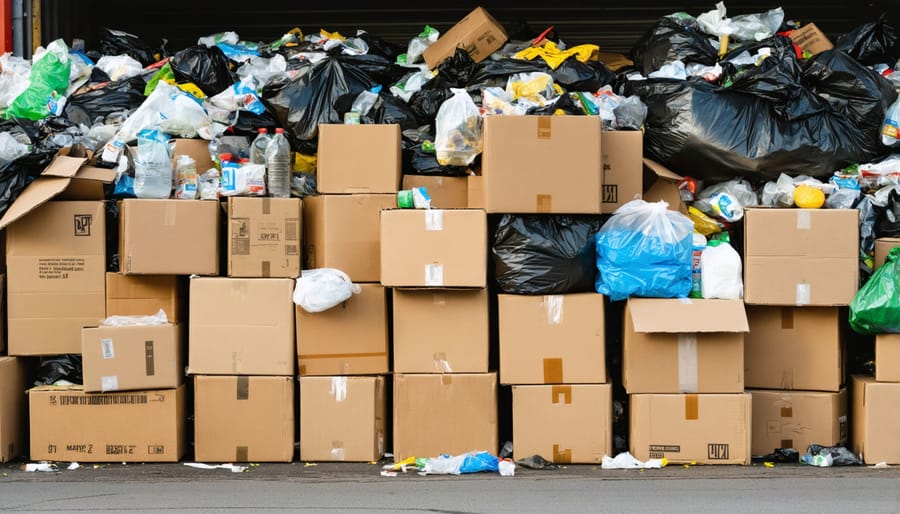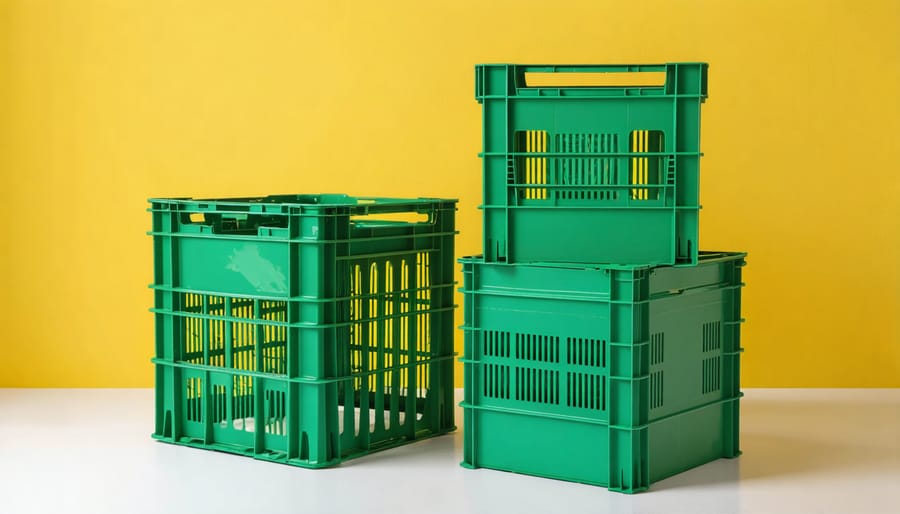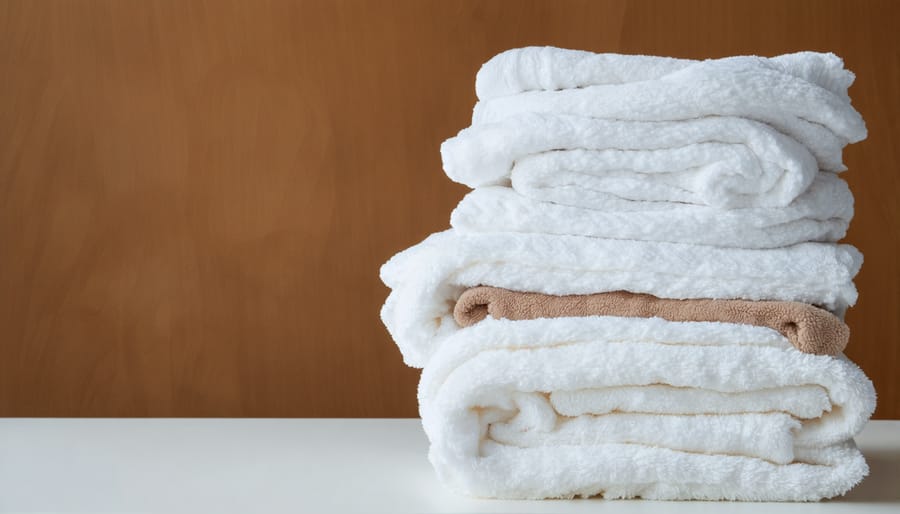Moving house ranks among life’s most resource-intensive activities, yet with strategic planning, your relocation can become an opportunity to reduce waste, minimize carbon emissions, and support sustainable practices across Australia.
Start by decluttering ruthlessly three months before your move date. Sort possessions into keep, donate, sell, and recycle categories—local Vinnies, Salvos, and community Buy Nothing groups eagerly accept quality items you no longer need. This reduces moving volume by up to 40%, cutting fuel costs and packaging requirements significantly.
Book removalists who use biodiesel trucks or offset their carbon emissions through verified Australian programs. Request they supply reusable crates instead of cardboard boxes, saving approximately 15-20 boxes per average household move. Melbourne, Sydney, and Brisbane now have multiple crate hire services offering doorstep delivery and collection.
Source sustainable packing materials from local businesses—greengrocer boxes, newspaper from neighbors, and towels or clothing as cushioning eliminate single-use bubble wrap. For items requiring protection, choose compostable alternatives or rent specialized moving blankets.
Implement eco-friendly moving strategies throughout your timeline, from scheduling during off-peak periods to reduce traffic congestion, to choosing accommodation that minimizes travel distance between properties.
The average Australian move generates 50-100 kilograms of waste, but conscious logistics planning transforms this environmental burden into an exercise in mindful consumption. Your relocation decisions ripple through communities, supporting circular economy businesses while demonstrating that convenience and sustainability coexist beautifully in modern Australian life.
The Real Environmental Cost of Moving House in Australia
Every year, Australian households generate an estimated 20,000 tonnes of cardboard waste from moving boxes alone, with many ending up in landfill rather than being recycled. When you consider that the average Australian moves house approximately 11 times in their lifetime, the cumulative environmental impact becomes staggering.
Traditional moves create waste in ways we rarely consider. Beyond cardboard boxes, there’s the extensive use of bubble wrap, plastic sheeting, and packing tape, most of which aren’t recyclable in standard council bins. A typical three-bedroom house move can use up to 60 metres of plastic wrap just for furniture protection. These single-use materials often end up in landfill within days of the move completing.
Then there’s the transport factor. Moving trucks travelling between Australian cities consume significant diesel fuel, with a Melbourne to Sydney relocation generating approximately 200 kilograms of CO2 emissions just from the truck journey. Multiple trips for poorly planned moves multiply this impact considerably.
Perhaps most concerning is what gets left behind. Research from Australian waste management organisations indicates that up to 30 percent of household items get discarded during moves, with perfectly usable furniture, electronics, and household goods heading to tip shops or landfill. This represents not just physical waste, but also the embedded carbon from manufacturing, transporting, and disposing of these items.
The peak moving season between December and February compounds these issues, with waste collection centres reporting a 40 percent increase in household item dumping during this period. Many Australians, pressed for time during the moving process, default to disposal rather than exploring donation or resale options.
Understanding these impacts isn’t about feeling guilty. It’s about recognising that with some thoughtful planning and different approaches, we can significantly reduce the environmental footprint of our moves while often saving money and supporting our local communities in the process. The good news is that sustainable alternatives exist for every stage of the moving journey.

Planning Your Move With Sustainability in Mind
Decluttering Responsibly: Beyond the Tip Run
Moving house presents a perfect opportunity to lighten your load while keeping valuable items out of landfill. Rather than defaulting to the local tip, consider the many Australian organizations ready to give your pre-loved belongings a second life.
Start by sorting items into clear categories: donate, sell, upcycle, or recycle. For donations, trusted organizations like The Salvation Army, St Vincent de Paul Society, and Thread Together accept quality clothing, furniture, and household goods. Many offer free pickup services for larger items, making the process seamless. Local community groups through Facebook Marketplace or Buy Nothing Project connect you directly with neighbors who need exactly what you’re offering.
Selling items you no longer need can offset moving costs. Platforms like Gumtree, Facebook Marketplace, and eBay are popular for furniture and electronics, while specialized apps like Depop suit clothing and vintage finds. Host a garage sale to engage with your community one last time before departing.
For items beyond repair, proper recycling matters. Electronics contain valuable materials and shouldn’t reach landfill. TechCollect and MobileMuster offer free e-waste recycling across Australia. Soft plastics can go to REDcycle bins at major supermarkets, while Terracycle accepts hard-to-recycle items like beauty packaging.
Before you start packing, create a sustainable moving checklist to track your decluttering progress. Remember, every item diverted from landfill contributes to Australia’s circular economy while helping someone in your community.
Choosing Eco-Friendly Removalists and Transport Options
Finding a removalist that shares your environmental values doesn’t mean compromising on service quality. In fact, green moving companies are leading the industry with innovative practices that benefit both your move and the planet.
When researching removalists, look for companies operating fuel-efficient or hybrid vehicles. Some forward-thinking Australian companies have invested in biodiesel-powered trucks or optimised their route planning to minimize emissions. Carbon offset programs are another positive sign, where companies calculate the carbon footprint of your move and invest in environmental projects to balance it out.
Reusable packing materials make a significant difference too. Rather than purchasing single-use cardboard boxes, ask potential removalists if they offer rental crates made from recycled plastic. These sturdy containers can be used hundreds of times and are collected after your move, eliminating waste entirely. Some companies also use biodegradable packing peanuts, recycled paper padding, and returnable furniture blankets.
Key questions to ask when comparing removalists include: What fuel do your vehicles use? Do you offer reusable packing options? How do you dispose of unavoidable waste? Do you have environmental certifications or memberships with green business organizations?
Several Australian removalists are pioneering sustainable practices. Companies like Gr8 Removals in Sydney and Careful Hands Movers in Melbourne have embraced comprehensive green policies, from vehicle choices to waste management. GetMovers nationwide has implemented carbon offsetting across their operations, while smaller regional operators often pride themselves on community-focused, low-impact approaches.
By choosing an eco-conscious removalist, you’re supporting businesses that prioritize our collective future while ensuring your belongings arrive safely at your new home.
Sustainable Packing Solutions That Actually Work
Ditch the Cardboard: Reusable Packing Container Services
Aussie movers are discovering a smarter alternative to drowning in cardboard boxes: reusable packing container services. Several homegrown companies now offer sturdy plastic crates that arrive at your door, hold your belongings securely during transit, and get collected after you’ve unpacked. It’s like having a moving day wardobe that returns to help the next family.
How does it work? You book your crates online, they’re delivered before moving day, you pack them up, and the company collects the empties once you’ve settled in. Most services operate across major Australian cities, with some expanding to regional areas. Companies like Rent a Green Box, Crate Expectations, and Green Crate offer various crate sizes to suit everything from books to kitchenware.
The cost comparison might surprise you. While purchasing cardboard boxes for a three-bedroom home typically runs between 150 to 300 dollars, crate rental services charge roughly 200 to 400 dollars for similar capacity. Yes, slightly more upfront, but here’s where it gets interesting: those plastic crates won’t collapse when stacked, they’re waterproof, and they come with attached lids so you’re not hunting for tape at midnight.
Beyond the environmental wins of reducing single-use cardboard, renters rave about the practical benefits. The stackable design maximises space in moving trucks, potentially reducing the number of trips needed. They’re also easier to carry with ergonomic handles, and your belongings stay cleaner throughout the journey. For community-minded movers, you’re actively supporting Australian businesses building circular economy solutions right here at home.

Creative Packing Materials You Already Own
Before you rush to buy new packing materials, take a mindful look around your home. You’re likely sitting on a goldmine of protective wrapping that’s already doing half the job. Soft towels, bed linen, and clothing make excellent cushioning for fragile items while serving double duty by packing themselves. Simply wrap plates between tea towels or nestle glassware inside socks and jumpers. This approach eliminates waste and reduces your moving costs simultaneously.
Australian households can also tap into community networks for packing supplies. Local Facebook groups and platforms like Gumtree often have people giving away boxes and materials after their own moves. Many cafes and supermarkets happily provide sturdy fruit boxes free of charge, which are perfectly sized for heavier items like books.
If you need additional padding, newspapers work brilliantly, or consider asking friends and neighbours to save their clean packing paper. Rather than purchasing single-use bubble wrap, repurpose egg cartons for small delicate items or use dish cloths and scarves as gentle buffers. These creative solutions demonstrate that sustainable moving doesn’t require compromise. You’ll protect your belongings just as effectively while keeping unnecessary plastics out of Australian landfills and showing others that conscious choices can be practical too.

When You Need Boxes: Sourcing and Recycling Responsibly
Before spending a cent on packing materials, tap into your local community networks. Many Australians are giving away sturdy moving boxes through Facebook Marketplace, Gumtree, and neighbourhood Buy Nothing groups. Local bottle shops, bookstores, and supermarkets often have excellent boxes they’re happy to share, particularly if you visit early in the week after stock deliveries. Simply ring ahead and ask what they’ve got available.
When purchasing boxes is necessary, choose options made from 100% recycled cardboard, clearly marked with the Australasian Recycling Label. This simple choice supports our circular economy and reduces demand for virgin materials. Look for boxes that can be flat-packed and reused multiple times.
After your move, resist the temptation to send boxes straight to landfill. According to Australian recycling guidelines, cardboard must be clean, dry, and flattened before placing in your yellow-lidded recycling bin. Remove all plastic tape, sticky labels, and packing materials first. One common mistake is bundling boxes with string or placing them beside overflowing bins, where they often end up contaminating other recyclables or blowing away.
Consider passing your boxes forward through the same community channels where you found them. This creates a beautiful cycle where the same boxes might help several families move homes, maximising their environmental value while strengthening neighbourhood connections.
Reducing Fuel Emissions During Your Move
Consolidating Trips and Choosing Efficient Routes
Smart planning during your move can significantly reduce your environmental footprint while saving you money. The key is consolidating trips and selecting the most efficient routes for your circumstances.
Before booking transport, take time to properly assess your load volume. Many Australian households underestimate this step and end up with multiple trips that burn unnecessary fuel. For local versus long distance moves, consider whether one larger vehicle is more efficient than several smaller trips. While it might seem more expensive upfront, a single journey in an appropriately sized truck typically uses less fuel per item than multiple car runs.
Route optimization matters too. Modern GPS technology helps avoid traffic congestion and unnecessary kilometres. When coordinating with removalists, ask about their route planning practices. Many progressive Australian moving companies now use software that minimizes fuel consumption by planning the most direct paths and scheduling moves to avoid peak traffic periods.
If you’re moving yourself, group your trips logically. Transport heavier items first in one journey, then lighter goods. This approach prevents the temptation of “just one more quick trip” that adds up over moving day. Community moving groups across Australian suburbs often share vehicle resources, allowing neighbours to pool their needs and reduce overall vehicle usage.
Carbon Offsetting Your Move
Carbon offsetting transforms your move’s environmental impact into positive climate action, but only when done thoughtfully. Here’s how to make it count.
The concept is straightforward: you calculate the greenhouse gas emissions from your move (fuel consumption, vehicle manufacturing impact, and waste generated), then fund projects that reduce or capture an equivalent amount of carbon elsewhere. The key is choosing verified programs that deliver measurable results, not just purchasing certificates that sound good.
Several Australian providers stand out for transparency and impact. Greenfleet plants native forests across Australia, with projects you can actually visit. Climate Friendly focuses on renewable energy and regeneration projects within our region. Carbon Neutral, Australia’s first certified carbon neutral company, supports a mix of local and international initiatives with rigorous verification.
Calculating your move’s emissions requires honest accounting. A typical three-bedroom house move using a 6-tonne truck travelling 500 kilometres generates approximately 150-200 kg of CO2. Most offset providers offer free calculators on their websites where you input vehicle size, distance, and additional factors. Don’t forget to include flights if you’re moving interstate, as aviation significantly increases your carbon footprint.
The cost might surprise you – offsetting an average local move typically ranges from fifteen to thirty dollars. That’s less than your morning coffees during moving week. However, remember that offsetting shouldn’t replace reduction efforts. It’s the final step after you’ve chosen efficient routes, consolidated shipments, and donated unwanted items locally. True climate action combines minimising emissions first, then offsetting what remains unavoidable.

Setting Up Your New Home Sustainably
Responsible Disposal of Moving Materials
Once you’ve settled into your new space, you’re likely facing a mountain of cardboard boxes, bubble wrap, and packing paper. The good news? Australia has fantastic options for giving these materials a second life rather than sending them to landfill.
Start by checking your local council’s recycling guidelines, as cardboard collection varies across regions. Flatten boxes to save space and ensure they’re clean and dry before placing them in your recycling bin. For excess materials your bin can’t handle, services like RecyclingNearYou.com.au can connect you with drop-off centres nearby.
Consider passing reusable boxes and packing materials along through community groups. Facebook Buy Nothing groups and Gumtree are brilliant platforms where people actively seek moving supplies. Many Australians are embracing the circular economy mindset, and your leftover materials could save someone else money while reducing waste.
For unwanted furniture and household items, explore donation options with charities like St Vincent de Paul, Salvation Army, or local op shops. These organisations often provide free pickup services for larger items in good condition. Alternatively, councils across Australia run regular hard waste collections and drop-off days for items that can’t be donated.
By thoughtfully disposing of your moving materials, you’re not just clearing your space, you’re actively contributing to a more sustainable community and reducing the environmental footprint of your move.
Making Your New Place Energy Efficient from Day One
Moving into a new home presents the perfect opportunity to establish energy-efficient habits from the outset. Start with quick wins that make an immediate impact. Switch all light bulbs to LEDs, which use up to 75% less energy than traditional bulbs and last significantly longer. Install draught stoppers under doors and check window seals to prevent heat loss in winter and keep cool air in during summer.
Consider switching to a green energy provider that sources electricity from renewable sources like wind and solar. Many Australian providers now offer competitive rates for 100% renewable energy plans. If your new property allows, explore installing solar batteries to maximize energy independence and reduce grid reliance.
Water conservation is equally important in Australia’s climate. Fit water-efficient showerheads and tap aerators, which can reduce water usage by up to 50% without sacrificing pressure. Check for any leaking taps immediately and install dual-flush toilet systems if not already present.
Establish sustainable routines early by setting up visible reminders near switches and appliances. Create a system for managing heating and cooling efficiently, using timers or smart thermostats to maintain comfortable temperatures only when needed. Position your fridge away from heat sources and ensure proper airflow around the back.
These foundational changes become second nature when implemented from day one, setting you up for lower bills and reduced environmental impact throughout your tenancy.
Community Resources and Support for Sustainable Moves
Moving sustainably becomes remarkably easier when you tap into Australia’s vibrant community networks designed to support eco-friendly transitions. Across the country, neighbourhoods are embracing collaborative approaches that make green moves both practical and affordable.
Community-sharing platforms like Facebook Buy Nothing groups operate in hundreds of Australian suburbs, connecting neighbours who can lend moving equipment, share packing materials, or even offer helping hands on moving day. These hyperlocal networks embody the spirit of circular economy, where boxes and blankets circulate through communities rather than ending up in landfill. Similarly, platforms like Gumtree and Freecycle help you find free moving supplies and rehome unwanted items with locals who truly need them.
Local councils throughout Australia increasingly offer resources specifically for sustainable moving. Many provide free or subsidised composting workshops, helping you establish zero-waste practices in your new home from day one. Council waste management centres often accept donations of reusable items and offer collection services for proper recycling of electronics and household materials that shouldn’t be transported.
Tool libraries and community workshops scattered across Australian cities allow you to borrow moving equipment without purchasing items you’ll rarely use again. From furniture dollies to power drills for furniture assembly, these shared resources reduce consumption while building community connections.
Environmental organisations like Sustainability Victoria and Planet Ark provide comprehensive online resources, including moving checklists, directories of eco-friendly service providers, and advice on reducing relocation waste. Their Australian-specific guidance ensures you’re accessing relevant, localised information rather than generic international content. By engaging with these community resources, you’re not just making your move easier—you’re actively participating in Australia’s growing sustainability movement and discovering the support networks that make green living genuinely achievable.
Moving sustainably in Australia isn’t just possible—it’s becoming the new standard, and you’re part of that positive shift. The beauty of eco-friendly moving logistics is that it doesn’t require perfection or an enormous budget. Small changes create ripples that extend far beyond your own relocation, inspiring neighbours, friends, and even your moving company to rethink their practices.
Whether you’ve decided to source recycled boxes from local community groups, chosen a removalist committed to carbon offsetting, or simply planned your route to minimize fuel consumption, every sustainable choice matters. These aren’t just environmentally responsible decisions; they’re practical solutions that often save money and reduce stress during an already hectic time.
As you embark on your moving journey, remember that sustainable logistics is about progress, not perfection. Start with one or two changes that feel manageable—perhaps swapping bubble wrap for towels or donating unwanted items instead of sending them to landfill. Watch how these small steps naturally lead to bigger transformations in how you approach consumption and waste.
We’d love to hear how you’ve made your move more sustainable. What worked brilliantly? What surprised you? Share your experiences, tips, and even your challenges in the comments below. Your story might be exactly what someone else needs to take that first step. Together, we’re building a community that proves sustainable moving isn’t just achievable—it’s the smarter, more connected way forward for all Australians.
